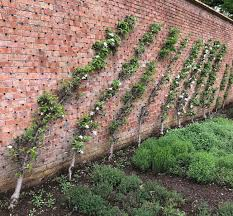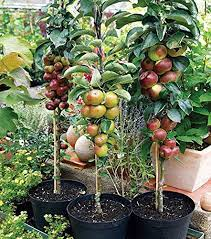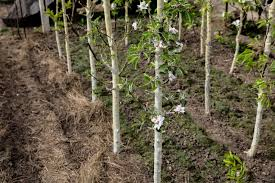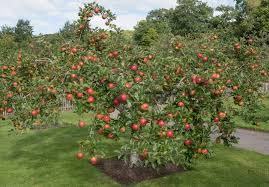Many gardeners believe that fruit trees require expansive space, but modern techniques and dwarf rootstocks have changed that perspective. Cordon fruit trees are a great solution for those with limited space, allowing you to grow a variety of fruits in tight areas while still enjoying a bountiful harvest.
What Are Cordon Fruit Trees?
Cordon fruit trees are trained to grow as a single stem, with fruit sprouting from short lateral branches. This training method allows trees to stay compact, making them ideal for small gardens. These trees are often grown at a 45-degree angle, which helps maximize the height of the stem and the fruit’s accessibility. However, they can also be grown vertically, depending on your preference.

Growing Cordon Fruit Trees in Containers
Cordon trees are perfect for small spaces or containers. While their final yield may be smaller than traditional trees, their compact size allows you to plant them just 60-90 cm (2-3 feet) apart, which compensates for the reduced fruit production. A row of cordons along a 5-meter-long garden could produce up to 80 kg (176 lbs) of fruit annually.
Apple and pear trees are the most successful cordons, but cherries and plums can also be grown this way. Choose spur-fruiting varieties (which bear fruit on short branches) for a more consistent harvest, and plant varieties that flower at the same time to ensure successful pollination.

Where to Grow Cordon Fruit Trees
Cordon trees thrive when grown against a wall or fence, where they can capture the reflected warmth and ripen fruit more effectively. The structure of a wall also makes the trees easier to maintain and harvest. Alternatively, they can be grown against horizontal wires supported by sturdy posts. This setup can be used to create a “living wall,” making cordons a great way to divide sections of your garden, such as a vegetable patch.
For the best results, set up three horizontal wires spaced about 60 cm (2 feet) apart to support the trees. Use durable, thick wire to ensure the setup lasts as long as the trees. High-quality vine eyes can be used to secure the wires to posts or a wall.
Planting Cordon Fruit Trees
When planting cordon trees, start by clearing weeds and improving the soil with well-rotted manure or compost. Add a handful of bonemeal to help the roots establish themselves. Support the growing stem by tying it to a tall bamboo cane, angled to match the desired shape. Make sure the union (where the stem meets the rootstock) is above ground level, as this will reduce the risk of breakage.
Space trees 60-90 cm (2-3 feet) apart and ensure the scion (top part of the tree) faces upwards to prevent damage at the union. Water the trees well after planting and continue to water during dry periods.

Pruning Cordon Fruit Trees
Proper pruning is essential for maintaining the cordon shape and encouraging fruit production. Pruning should be done in late summer and winter.
- Late Summer Pruning: Cut back new side shoots to three leaves. For lateral branches that bear fruit, trim them back to just one leaf beyond the basal cluster. This stimulates the tree to form flower buds for the following spring, improving fruit yields.
- Winter Pruning: Remove congested or old, unproductive laterals to allow better air circulation. This helps maintain the tree’s health and encourages new growth for future fruiting. Once the main stem reaches the desired height, prune the end growth to one leaf each spring.
Cordon fruit trees are low-maintenance and provide a fantastic way to grow a wide variety of fruits without overwhelming your garden space. With proper care, you’ll soon realize the full potential of these compact, productive trees.
